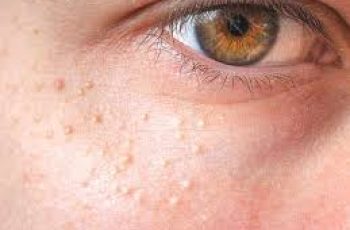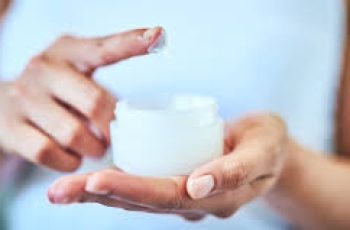
Argiriline in Skin Care Products
Argiriline
Argiriline is one of the most popular skin care peptides because it was originally advertised to be better than Botox.
Argiriline has been shown to have short term skin benefits and has interesting effects on cells in the laboratory which is why it has been compared to Botox.
However, when used in face creams and serums, argiriline cannot permeate the skin layers to reach the muscle and relax muscles like Botox can -so Argiriline in no way is a replacement for Botox injections.
How does Argiriline work on skin? Is it Effective?
This cosmeceutical peptide works by copying another molecule called SNAP-25 and breaks up a group of molecules called the SNARE complex.
SNAP-25 in the SNARE complex is the same target for Botulinum Toxin Type A (Botox, Dysport, Xeomin, Jeaveau, Daxxify).
Some companies used to say that skin care products with Argiriline are “Better than Botox” . (They actually got away with making that false claim by adding a question mark so that instead of a claim it was actually a question “Better than Botox?”. )
The problem with Argiriline and other peptides is that it does not penetrate deep enough into the skin’s layers to have an effect.
Studies on this peptide were done in cell cultures where skin penetration is not an issue.
Peptides do not absorb through the skin into the muscle to relax muscles the same way Botox does.
This is why Argiriline does not have the same benefits as Botox, Dysport and other forms of Botulinum Toxin Type A.(1)
Benefits of argiriline
Other names for Argiriline
Argiriline is also called Acetyl Hexapeptide-8 and Acetyl Hexapeptide-3.
Argiriline® is made up of these : Ac-Glu-Glu-Met-Gln-Arg-Arg-NH2.
This sequence includes multiple amino acids joined together by peptide bonds. The peptide begins with an acetyl group (Ac-) and ends with an amide group (-NH2), which are common modifications to peptides.
The structure of this molecule may also be stated like this: Acetyl-Glu-Glu-Met-Gln-Arg-Arg-NH2 or Ac?EEMQRR?NH2.
Studies on Argiriline (Acetyl Hexapeptide-8)
There are some studies that assessed Argiriline containing creams and their benefits.
One study (2) looked at ten women who used a topical ream with 10% acetyl hexapeptide-3 and compared it to a cream without Argiriline (called the vehicle).
They put the creams on the area around the eyes twice a day for 30 days.
The study did not say if the people doing the study or the women in the study knew which cream was which. If this were a blinded study, they would have stated that in the research publication. Not using a blinded research method allows bias to affect study results.
The scientists looked at the wrinkles on the women’s skin before and after using the creams. Women who used the cream with Argiriline had 30% fewer wrinkles than before.
But they also said that the women who used the vehicle cream had 10% fewer wrinkles than before.
It is not very clear if the difference between these two numbers is statistically significant, if they were the research publication would state that clearly because that sit h goal of research studies to show statistical significance.
The study also showed by looking at excised epidermis that acetyl hexapeptide-3 can go through the top layer of skin. But to get to the muscles where it could mess with the SNARE complex, it would also have to go through other layers of skin, which the study did not look at.
Another study (3) was conducted in 2015 on acetyl hexapeptide-3 with 40 female participants. It was not clear from the publication whether the participants and investigators were blinded.
The study cream or vehicle was applied twice daily by both groups to the forearm and face.
Both the active and the vehicle showed increased hydration. The reviscometer measurements of shear wave propagation showed a decrease in skin anisotropy, but only on the face, suggesting that the peptides increased skin firmness. There was no improvement in skin elasticity as measured with a cutometer.
The authors concluded that “acetyl hexapeptide-3 is an effective anti-aging compound,” but they did not consider the possibility that accumulated peptides on the skin’s surface could affect firmness without affecting the skin’s biology.
Peptides are known to coat the skin’s surface giving a feeling or firmness which disappears when the cream is washed off.
botox vs argiriline
A study (4) in 2017 examined a combination of two peptides (tripeptide-10-citrulline and acetyl hexapeptide-3) on 24 women to see if it could improve skin roughness. The participants were split into four groups: one group used both peptides, one group used only tripeptide-10-citrulline, one group used only acetyl hexapeptide-3, and the last group used a placebo. The study measured skin roughness and found no significant difference between the placebo group and the groups using the peptides after 20 and 40 days. However, after 60 days, there was a significant difference between the placebo group and the group using both peptides (including argiriline). The study suggested that the peptides can reduce TEWL (transepidermal water loss) by forming a protective film on the skin’s surface. However, the study did not consider wrinkle depth, only skin roughness, and the presentation of the data in the abstract was confusing and lacked transparency. Therefore, the study’s claim that the peptides can reduce wrinkle depth is questionable.
How does Argiriline compare to other antiaging skin care ingredients?
Argiriline is not as good as retinol, ascorbic acid, exosomes and growth factors to treat wrinkles.
Ingredients like argiriline are best used in addition to other ingredients for maximum effect.
Is Argiriline better than retinol?
NO, argiriline is not the best – retinol and retinoids are the best antiaging skin creams.
There are many types and strengths and must be used properly to prevent side effects.
But retinoids are worth using because studies have shown they treat many of the causes of wrinkles.
Argiriline does not treat any of the causes of skin aging.


